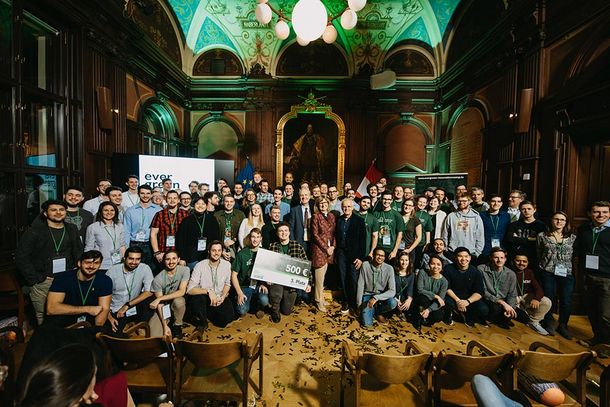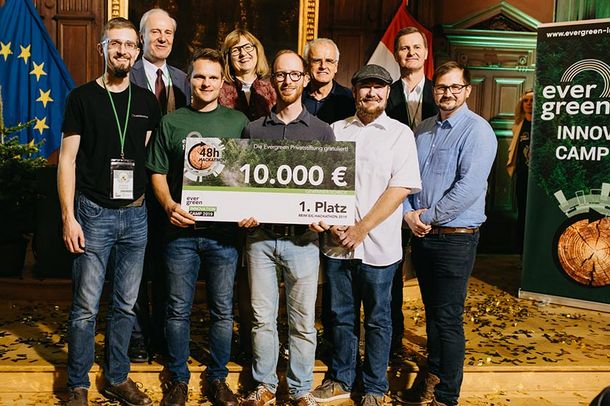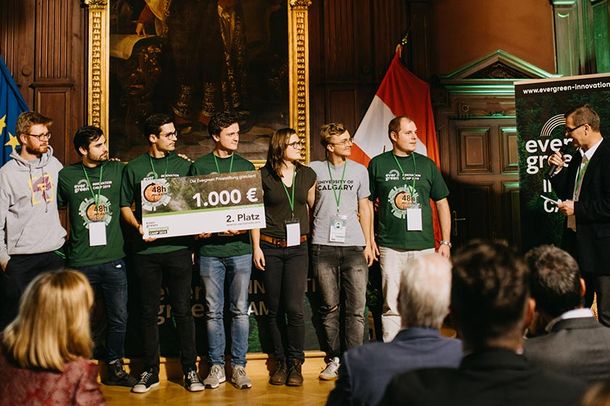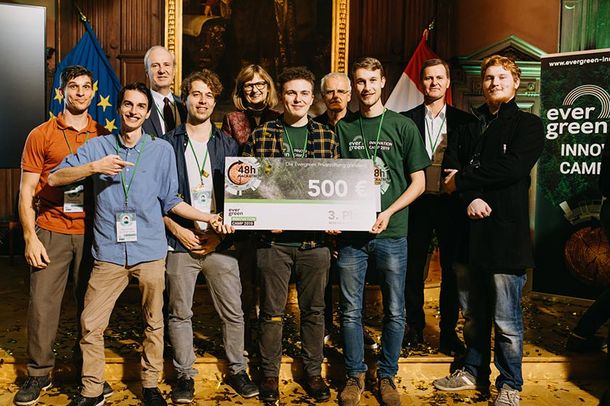Successful first Evergreen Innovation Camp 2019
The first Hackathon as part of the Evergreen Innovation Camp took place from November 27th to 29th, 2019, at the University of Natural Resources and Life Sciences in Vienna. Over 70 students and young professionals from Austria, Germany, and Switzerland worked in interdisciplinary teams to develop innovative and actionable solutions for tracking the wood supply chain from the forest to the sawmill. The concept was a success, with teams demonstrating great commitment and creativity. The quality of the ideas developed was consistently high.
At least two concepts have significant potential for actual implementation. Last year's winning project, "Tree ID," is currently in the proof of concept phase. It is based on the comparison of laser measurement data from the forest and the sawmill. Before harvesting, the standing trees are measured using laser scanning. The contour of the trunk and the distribution of branches along the trunk are unique, allowing for recognition. The Hackathon team "Beetle" also developed a promising coding device that can assign logs in the sawmill to their exact harvesting location. The idea has matured to the point where the five-member team is now working with startup accelerators to establish their own company.
The winners of the first Evergreen Innovation Camp Hackathons 2019
During the first Evergreen Innovation Camp Hackathon, 75 students and young professionals from a total of 18 universities in Austria, Germany, and Switzerland teamed up to work on a solution for tracking wood to its exact origin in a 48-hour timeframe.
"We are deeply impressed by the numerous concepts that emerged from the Hackathon. With the Hackathon, we have brought a new culture of innovation to the forestry industry," said Dr. Georg Erlacher, Board Member of the Evergreen Private Foundation.
All 12 teams developed innovative solution approaches and prototypes, some of which were based on blockchain and artificial intelligence, within the 48-hour timeframe. The high level of their work, their motivation, and the fun they had impressed not only the jury but also the mentors and the team of the Evergreen Innovation Camp.

1st Place
The winning team, "Tree ID," developed a concept based on the comparison of laser measurement data from the forest and the sawmill. Prior to harvesting, the standing trees are measured using laser scanning. The shape of the trunk and the distribution of branches along the trunk are unique, allowing for accurate recognition and identification.

2. Place
The second-place team, "Smeasure," programmed a functional prototype within 48 hours. Their neural network is capable of recognizing the distribution of branches on felled trees. Additionally, the team implemented a scanning mechanism for analyzing the tree's annual growth rings. To streamline the workflow, a camera and GPS module were integrated into the forestry worker's measuring tape.

3. Place
The team "Logsmiths" secured the 3rd place with their innovative solution. They developed a smart marking hammer that attaches RFID-tagged plaques to tree trunks. This automated process registers the GPS coordinates of each marked tree.
